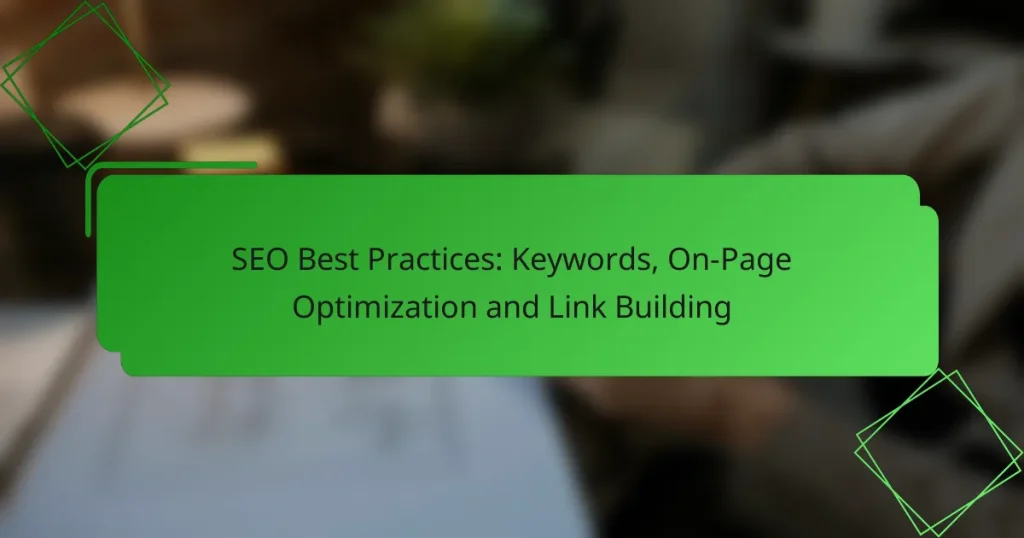Implementing SEO best practices is essential for improving your website’s visibility and attracting relevant traffic. By selecting the right keywords, optimizing your on-page content, and building quality backlinks, you can enhance your site’s authority and user experience. These strategies work together to ensure that your content reaches the right audience effectively.

How to choose the right keywords for SEO?
Choosing the right keywords for SEO involves identifying terms that your target audience is searching for, which can enhance your site’s visibility. Focus on relevance, search volume, and competition to select effective keywords that align with your content strategy.
Use Google Keyword Planner
Google Keyword Planner is a free tool that helps you discover keywords related to your business. By entering a few seed keywords, you can obtain data on search volume, competition levels, and related terms, allowing you to make informed decisions about which keywords to target.
To use it effectively, create a Google Ads account, navigate to the Keyword Planner, and explore keyword suggestions. Aim for keywords with a good balance of search volume and manageable competition.
Analyze competitor keywords
Examining the keywords your competitors rank for can provide valuable insights into your own keyword strategy. Tools like SEMrush or Ahrefs allow you to see which keywords are driving traffic to competitor sites.
Identify high-performing keywords that are relevant to your niche and consider how you can create better content around those terms. This competitive analysis can help you uncover gaps in your own keyword strategy.
Focus on long-tail keywords
Long-tail keywords are phrases that are typically three or more words long and are more specific than shorter keywords. They often have lower search volume but higher conversion rates, as they target users further along in the buying process.
For example, instead of targeting “shoes,” consider “best running shoes for flat feet.” This specificity can help you attract a more targeted audience and improve your chances of ranking higher in search results.
Consider search intent
Understanding search intent is crucial for selecting the right keywords. Search intent refers to the reason behind a user’s query, which can be informational, navigational, transactional, or commercial.
Align your keywords with the intent of your audience. For instance, if users are looking for product reviews, targeting keywords like “best laptops 2023 reviews” can be more effective than generic terms.
Utilize keyword research tools
In addition to Google Keyword Planner, various keyword research tools can enhance your keyword discovery process. Tools like Ubersuggest, Moz Keyword Explorer, and AnswerThePublic can provide unique insights and suggestions.
These tools often offer features such as keyword difficulty scores, search volume trends, and content ideas, which can help you refine your keyword strategy and identify opportunities in your niche.
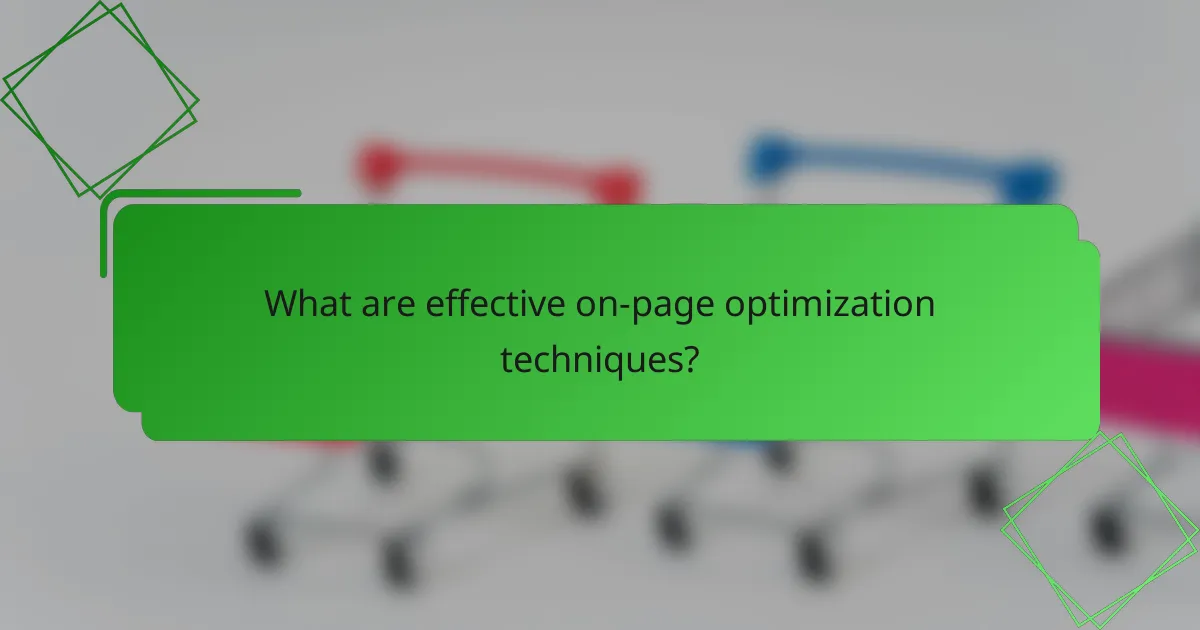
What are effective on-page optimization techniques?
Effective on-page optimization techniques enhance a website’s visibility and user experience. These strategies focus on improving individual web pages to rank higher and earn more relevant traffic from search engines.
Optimize title tags and meta descriptions
Title tags and meta descriptions are crucial for SEO as they provide the first impression of your content in search results. Ensure your title tags are concise, ideally between 50-60 characters, and include primary keywords relevant to the page.
Meta descriptions should be around 150-160 characters, summarizing the page content while enticing users to click. Avoid duplicating these elements across multiple pages to maintain uniqueness and relevance.
Use header tags strategically
Header tags (H1, H2, H3, etc.) structure your content, making it easier for both users and search engines to understand. Use H1 for the main title and H2 for subheadings, incorporating keywords naturally to enhance relevance.
Limit the use of H1 tags to one per page and ensure that subsequent headers follow a logical hierarchy. This organization not only improves readability but also helps search engines index your content effectively.
Improve content readability
Readable content keeps users engaged and reduces bounce rates. Aim for short paragraphs, simple language, and a conversational tone to make your content accessible to a wider audience.
Utilize bullet points or numbered lists to break up text and highlight key information. Tools like the Flesch-Kincaid readability test can help assess the complexity of your writing and guide adjustments.
Incorporate internal linking
Internal linking connects different pages on your website, enhancing navigation and distributing page authority. Use descriptive anchor text that reflects the linked page’s content, which helps both users and search engines understand the context.
Aim for a balanced internal linking strategy, ensuring that important pages receive more links while avoiding excessive linking that could confuse readers. Regularly audit your internal links to keep them relevant and functional.
Optimize images with alt text
Optimizing images with alt text improves accessibility and provides context to search engines. Use descriptive, keyword-rich alt text to explain the image content, which can enhance your SEO efforts.
Keep alt text concise, ideally under 125 characters, and avoid keyword stuffing. Properly sized images also contribute to faster loading times, which is a critical factor for user experience and SEO rankings.
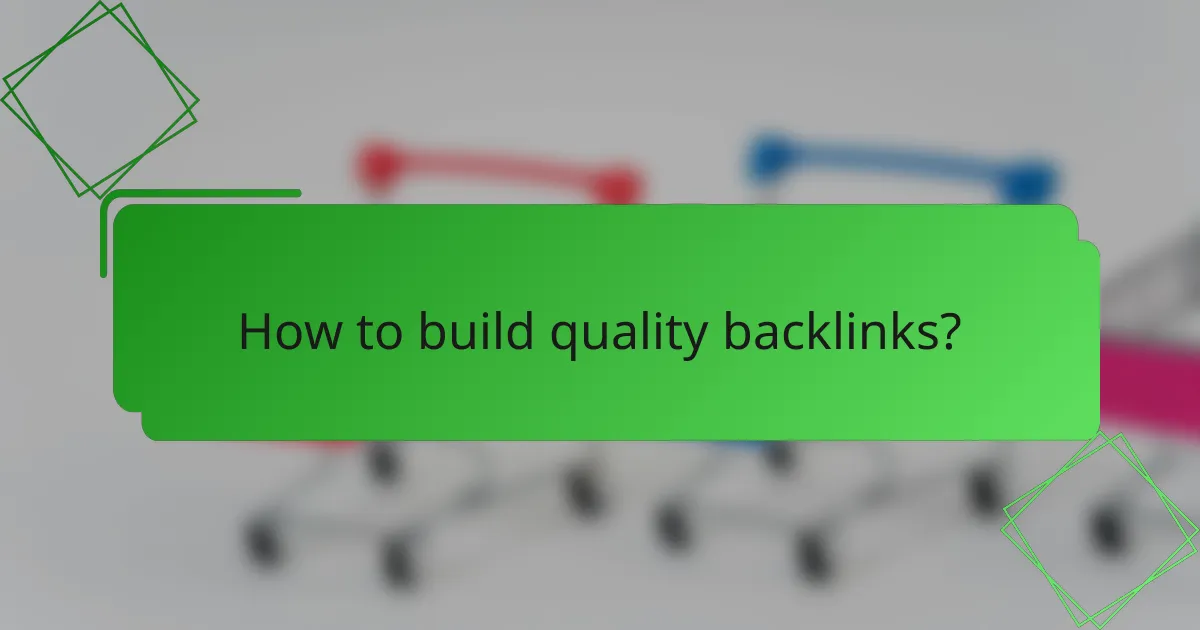
How to build quality backlinks?
Building quality backlinks involves acquiring links from reputable websites that enhance your site’s authority and visibility. Focus on strategies that foster genuine relationships and provide value to both your audience and the linking site.
Guest blogging on reputable sites
Guest blogging is a powerful way to earn backlinks by contributing content to established websites in your niche. When selecting sites, prioritize those with high domain authority and a relevant audience to maximize the impact of your link.
Ensure your guest posts are well-researched and provide valuable insights. This not only increases the likelihood of acceptance but also encourages readers to visit your site for more information.
Engage in influencer outreach
Influencer outreach involves connecting with key figures in your industry to promote your content. By building relationships with influencers, you can encourage them to share your work, resulting in valuable backlinks.
Personalize your outreach messages and highlight how your content can benefit their audience. This approach increases the chances of a positive response and collaboration.
Utilize social media for link sharing
Social media platforms are effective for sharing your content and attracting backlinks. By promoting your articles, infographics, or videos on platforms like Twitter, LinkedIn, and Facebook, you can reach a wider audience.
Engage with your followers and encourage them to share your content. The more shares you receive, the higher the likelihood of attracting backlinks from interested parties.
Participate in online forums
Joining online forums related to your industry can help you establish authority and earn backlinks. By actively participating in discussions and providing helpful answers, you can include links to your content when relevant.
Choose forums with active communities and adhere to their rules regarding self-promotion. Focus on building relationships and trust before sharing your links to avoid being seen as spammy.
Leverage broken link building
Broken link building is a technique where you find broken links on other websites and suggest your content as a replacement. This method not only helps the website owner fix their broken links but also earns you a valuable backlink.
Use tools like Ahrefs or Check My Links to identify broken links in your niche. Reach out to the site owners with a polite message explaining the issue and offering your content as a solution.
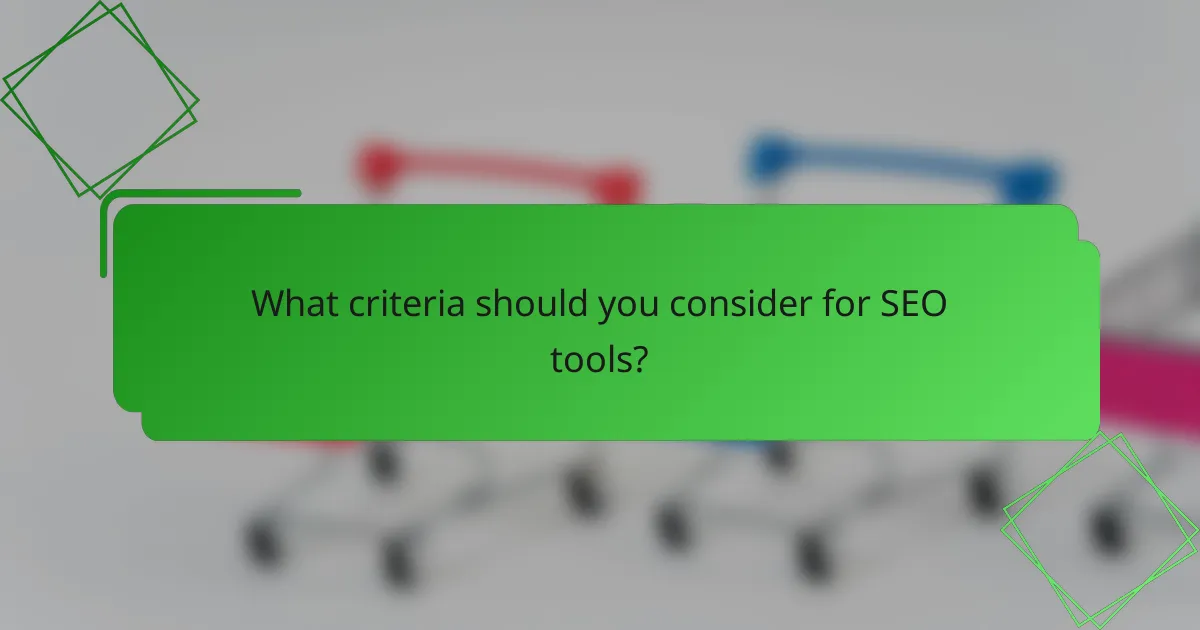
What criteria should you consider for SEO tools?
When selecting SEO tools, consider user interface, pricing, features, and integration capabilities. These factors will significantly impact your ability to effectively optimize your website and track performance.
Assess user interface and ease of use
A user-friendly interface is crucial for efficient SEO management. Look for tools that offer intuitive navigation, clear labeling, and easily accessible features to minimize the learning curve.
Consider tools that provide visual data representation, such as graphs and charts, which can help you quickly interpret information. A good user interface can save time and enhance productivity, allowing you to focus on strategy rather than getting bogged down by complexity.
Evaluate pricing and features
Pricing structures for SEO tools can vary widely, from free options to premium subscriptions. Assess whether the features offered align with your budget and specific needs, such as keyword tracking, site audits, and competitor analysis.
Many tools offer tiered pricing plans, so consider starting with a basic plan and upgrading as your requirements grow. Look for trials or demos to test features before committing to a subscription.
Check for integration capabilities
Integration capabilities are essential for streamlining your SEO efforts. Ensure that the SEO tools you choose can connect with other platforms you use, such as content management systems (CMS), analytics tools, and social media platforms.
Tools that offer API access or built-in integrations can enhance your workflow and data analysis. This connectivity allows for more comprehensive tracking and reporting, ultimately improving your SEO strategy.
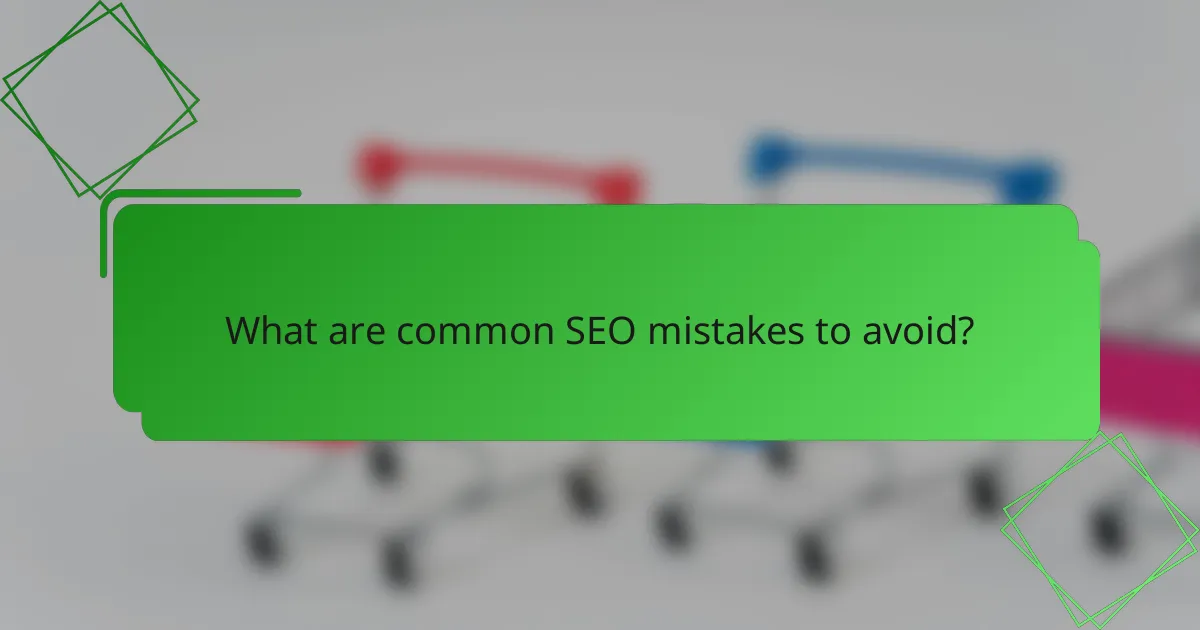
What are common SEO mistakes to avoid?
Common SEO mistakes can significantly hinder your website’s visibility and ranking. Avoiding these pitfalls is crucial for effective search engine optimization and can lead to better traffic and engagement.
Neglecting mobile optimization
Neglecting mobile optimization can lead to a poor user experience, resulting in higher bounce rates and lower search rankings. With a significant portion of web traffic coming from mobile devices, ensuring your site is mobile-friendly is essential.
To optimize for mobile, use responsive design techniques that adjust your website layout based on the device’s screen size. Test your site on various devices and browsers to ensure it functions seamlessly across platforms.
Common mistakes include using large images that slow down loading times and not considering touch navigation. Aim for load times under three seconds and ensure buttons are easily clickable on smaller screens to enhance usability.
